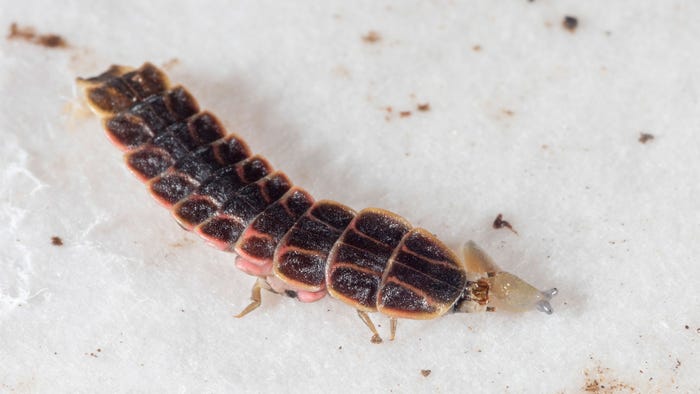
Your neighbor’s policy is “the only good bug is a dead bug.” He sprays everything in sight — in his fields, around his barns, and around his house and yard. Yet your daughter came home from college talking about “Integrated Pest Management.”
Best you can tell, IPM is a philosophy where you scout for insects, identify the pest, and if the pest is present in high enough numbers or doing enough economic damage, you control it. Otherwise, leave the sprayer in the shed and chemicals on the shelf.
Why? Your daughter says it’s because if you spray for the sake of spraying, you will wipe out good insects along with pests. Perhaps she talked to John Obermeyer, Purdue IPM specialist.
“Beneficial insects do a lot of positive things in the field and in the environment,” Obermeyer says. “It’s important to learn how to identify the beneficial ones from pests. Then, do all you can to encourage beneficial insects.”
Protect the good guys
Here are five things you may not know about beneficial insects. Each one could be a reason for considering IPM more carefully.
1. Firefly larvae target slugs. Hate slugs? Firefly larvae consider them a delicacy, Obermeyer says. “Firefly larvae are active when it warms up in the spring,” he says. “They crawl around the soil, under leaf litter and crop residues, seeking food. If slug eggs or juveniles are abundant, they are a target for these larvae.”
2. Beneficial insects reduce potential damage. Can enough firefly larvae in one place tackle slug problems? “Will they in themselves eliminate the threat from slugs?” Obermeyer begins. “Maybe not, but they certainly will reduce potential damage.”
There are no good chemical remedies for slugs once they appear. There are slug baits, but they are expensive and often hit-or-miss on control.
3. Beetles take out soft-bodied pests. Ground beetles and other beetle larvae, like those pictured in the accompanying slideshow, feed on eggs and soft-bodied insects, some of which feed on crops if left unchecked. Obermeyer notes that ground beetle larvae have been known to feed on slugs, armyworms and cutworms.
4. Dung beetles boost soil health. If you have livestock on pasture, dung beetles are likely at work, whether you know it or not. These insects help break down manure. Through their feeding and living habits, they often work into the soil, opening channels for water infiltration.
5. Chemicals contribute to fewer beneficial insects. There are fewer fireflies than 30 years ago, although it varies from area to area because there are different species of fireflies, Obermeyer says. Some are attracted to crop and sod fields, others to woodlands and marshes.
“A decline in insect numbers over time is essentially true for all species, good and bad,” he says. “Habitat destruction is probably the biggest culprit, but indiscriminate use of broad-spectrum insecticides has certainly contributed to lower insect populations, especially for insects tied to planted acres.
“Neonic insecticides, found on treated corn and soybean seed, are very toxic to insects, and they are now found everywhere, even where they weren’t applied.”
Read more about:
Integrated Pest ManagementAbout the Author(s)
You May Also Like




